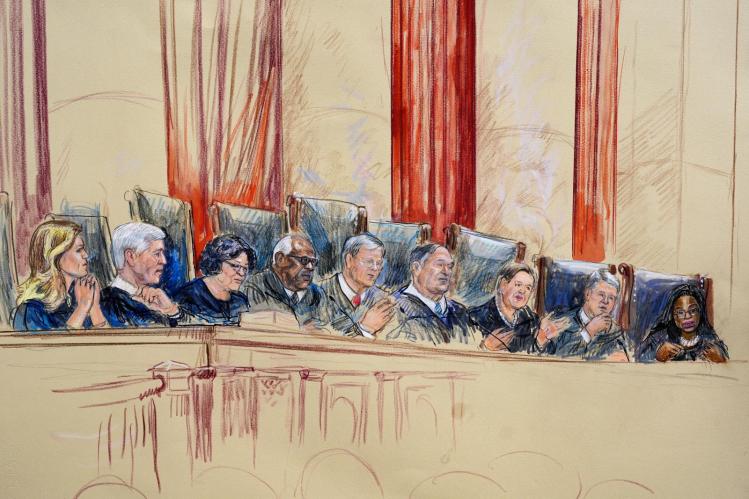
According to our Constitution, Congress makes the law, the president enforces the law, and judges interpret the law. But in the United States today, administrative agencies run the law. Legal scholar Susan Dudley has done the calculations: she points out that the Code of Federal Regulations, largely drafted by these agencies, consumes more than 185,000 pages. The regulations are more than four times as long as the U.S. legal code upon which they are based. Taken together, these regulations reflect the extensive reach of what critics call the “administrative state.”
We have all heard of the Food and Drug Administration, Homeland Security, and the Securities and Exchange Commission. But there are more than four hundred other federal agencies running nearly every aspect of modern life from A to Z—or at least A to W. The AbilityOne Commission helps people with disabilities find federal jobs, while the Woodrow Wilson International Center for Scholars conducts nonpartisan research to inform policymakers. In between, we have the Civil Rights Division of the Department of Justice, the Environmental Protection Agency, and the Social Security Administration.
Do these federal agencies have too much power? The conservative legal movement, spearheaded by the Federalist Society, has long believed that they do. Now, with a firm six-three majority on the Supreme Court, conservatives are in a position to act on that belief. At the end of the 2023–2024 term, the Court issued four opinions that significantly impeded the power of federal agencies: Loper Bright Enterprises v. Raimondo, SEC v. Jarkesy, Corner Post, Inc. v. Board of Governors of the Federal Reserve System, and Ohio v. EPA.
The first case, Loper, received the most attention from the media because it overruled a foundational case in contemporary administrative law, Chevron U.S.A., Inc. v. NRDC (1984). To convey a sense of its importance—and controversial nature—you might say that Chevron is administrative law’s Roe v. Wade (1973).
Chevron required courts to defer to an agency’s interpretation of ambiguous provisions in the federal statute it was responsible for implementing, provided that the interpretation was reasonable. From a practical perspective, Chevron made it easier for agencies like the EPA and the FDA to make and enforce regulations, because it signaled that most attempts by regulated entities to challenge the regulators’ interpretation of the governing law would be futile. Loper ends Chevron deference, holding that judges are not required to defer to any reasonable agency interpretations, but must proceed with their own best interpretation of the law.
How practically significant is Loper? Administrative law expert Richard J. Pierce Jr. maintains that its significance is overrated, in part because courts are still required to give “most respectful consideration” to agency interpretations. The Court made it clear that it was not likely to disturb past decisions under Chevron. Moreover, both litigants and agencies have long been preparing for Chevron’s demise, which everyone saw coming. Consequently, Pierce claims that Loper “is unlikely to change the outcome of many disputes about the meaning of regulatory statutes.”
Pierce argues that the three other cases in the list have greater potential to “cripple” the work of administrative agencies. Jarkesy hampered the ability of the SEC to punish securities fraud by holding that defendants are entitled to jury trials, rather than merely the in-house disciplinary procedures used by the SEC and other agencies. Corner Post interpreted a statute of limitations in a way that made it much easier for corporate entities to object to longstanding government rules and regulations. And in Ohio v. EPA, which Pierce views as the most worrisome precedent, the Supreme Court used its emergency docket to stay the enforcement of an EPA rule, which, from a practical perspective, substantially decreased the likelihood it would ever be enforced. It essentially amounted to a judicial pocket veto.
Pierce may well be right about the relative pragmatic importance of Jarkesy, Corner Post, and Ohio v. EPA. But I think he underestimates the broader impact of the Loper majority opinion, which lays bare the aggressive agenda of the Trump Court. In a nutshell, it signals the ascendency of the imperial judiciary, thinly cloaking its ambitions in three highly misleading tropes about how the law operates.
First, the majority opinion, written by Chief Justice John Roberts, sets forth a static account of law’s meaning. In his view, the law, whether found in the Constitution or a statute, means what it meant when it was enacted. The legal text is to be decoded by referring to the presuppositions operative at the time. The meaning of the law does not evolve or develop depending upon changing social circumstances. Roberts acknowledges that the “facts” to which the law directs our attention might change over time, but he suggests that the meaning of legal norms remains constant.
This differentiation between unchanging law and changing facts resonates with the common, lay understanding of law. But the reality, as lawyers know, is very different. Legal norms and facts are intertwined—and their interpretation points to the community we live in today, not the one that generated the law decades ago. It is true that the meaning of the law develops in a disciplined way, often by analogy. It does not change willy-nilly. But it does develop, because law has to be flexible enough to guide the behavior of the living, not merely the long dead. To take some basic legal examples, what counts as “reasonable” and “prudent” behavior cannot be unpacked without reference to today’s social context. Law and fact may be distinguished, but never separated.
Second, the opinion adopts a rigid—and in my view, untenable—account of how law should be interpreted. Roberts asserts that there is always one clearly identifiable “best” meaning of an ambiguous statutory provision, which can be uncovered solely by using tools of legal interpretation firmly ensconced in the judicial toolbox. The task of the judge is to use those tools and articulate the best meaning, which may or may not correspond to the meaning given it by the agency.
As the legal theorist and literature scholar James Boyd White has shown, many texts, including legal texts, are subject to a number of plausible readings. What makes one the “best” reading? There is no clear answer, especially with respect to law, because interpretation is often a balancing of policy concerns, as the dissent points out. How well will a particular reading achieve the purposes of the statute like the Environmental Protection Act? How important are those particular purposes? What are the costs of enforcement, given that reading of the statute? Discerning the proper balance is not an “objective” activity, but requires grasping the point of the statute and the regulations from an internal, practical perspective. In other words, it requires the kind of prudence demonstrated by those who have dedicated their lives to bringing the statute to life. Chevron deference was based on respect for the virtue of practical wisdom.
The first two problems feed into and justify the third and most troublesome aspect of the Loper majority opinion: its full-throated commitment to an expansive understanding of judicial power. The opinion actually quotes the classic defense of judicial power, Chief Justice John Marshall’s 1803 proclamation in Marbury v. Madison that “[i]t is emphatically the province and duty of the judicial department to say what the law is.” But why is that the case? Pervading the Loper majority opinion is the belief that judges are just better at it. They have the interpretive toolbox. Moreover, they alone can be trusted to use the right interpretive framework, which requires a textualist and originalist approach. In the view of the Trump Court, any other approach to interpretation is illegitimate, not merely different.
But as first-year law students learn when they study Marbury v. Madison, the other branches of government are charged with interpreting the Constitution too. And the Constitution did not give the judicial branch ultimate power of interpretation; Marshall simply took the power then, just as Roberts is taking it now. He is masking his efforts with misty and untenable myths of unbiased judicial expertise and the neutrality of the interpretive process. Lurking behind these myths of interpretation is a conservative political agenda that is the real driver.
In my view, the practical effect of these four decisions will be a slow decline in Americans’ quality of life. FDA regulations keeping our drugs safe or EPA regulations safeguarding our drinking water and the air we breathe will be neutralized because they’ll be tied up in endless litigation. And when cancer rates rise, people will blame Congress or the president. But the people actually at fault are hiding behind their big black robes.
To grasp the nettle of the Trump Court, we need to turn away from its myths about itself and view its decisions in the cold light of legal realism. As Justice Robert Jackson said in 1953, “We are not final because we are infallible, but we are infallible only because we are final.”
